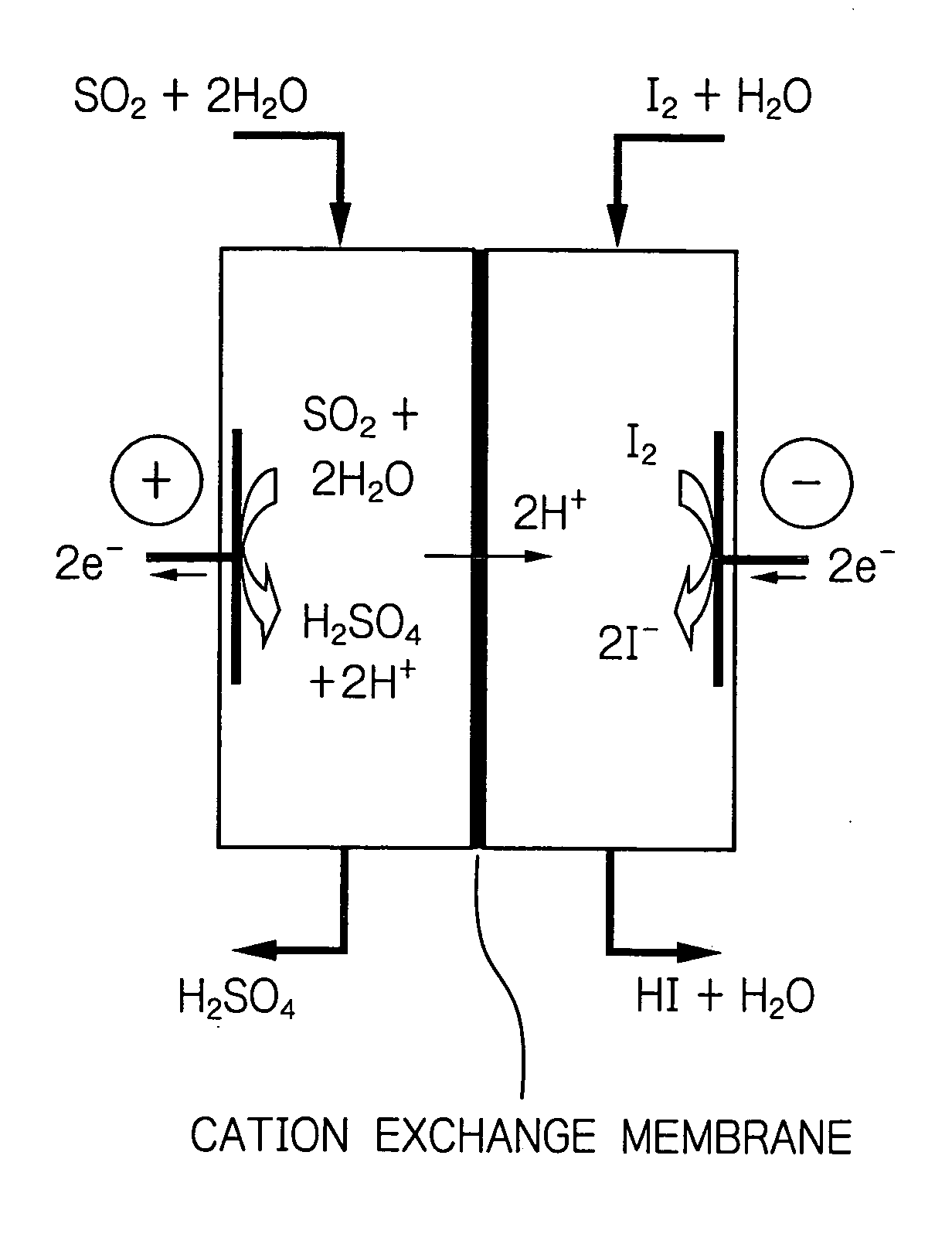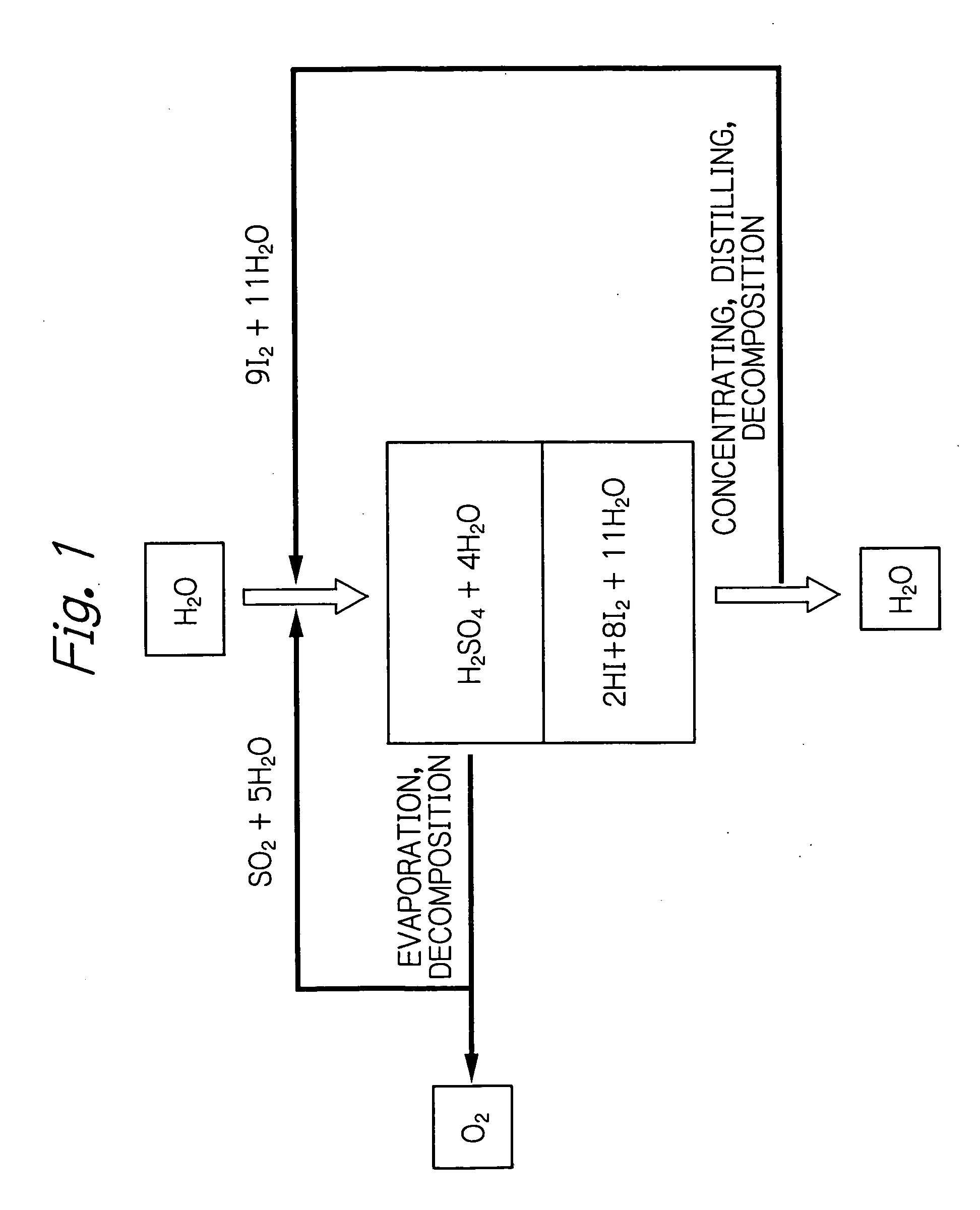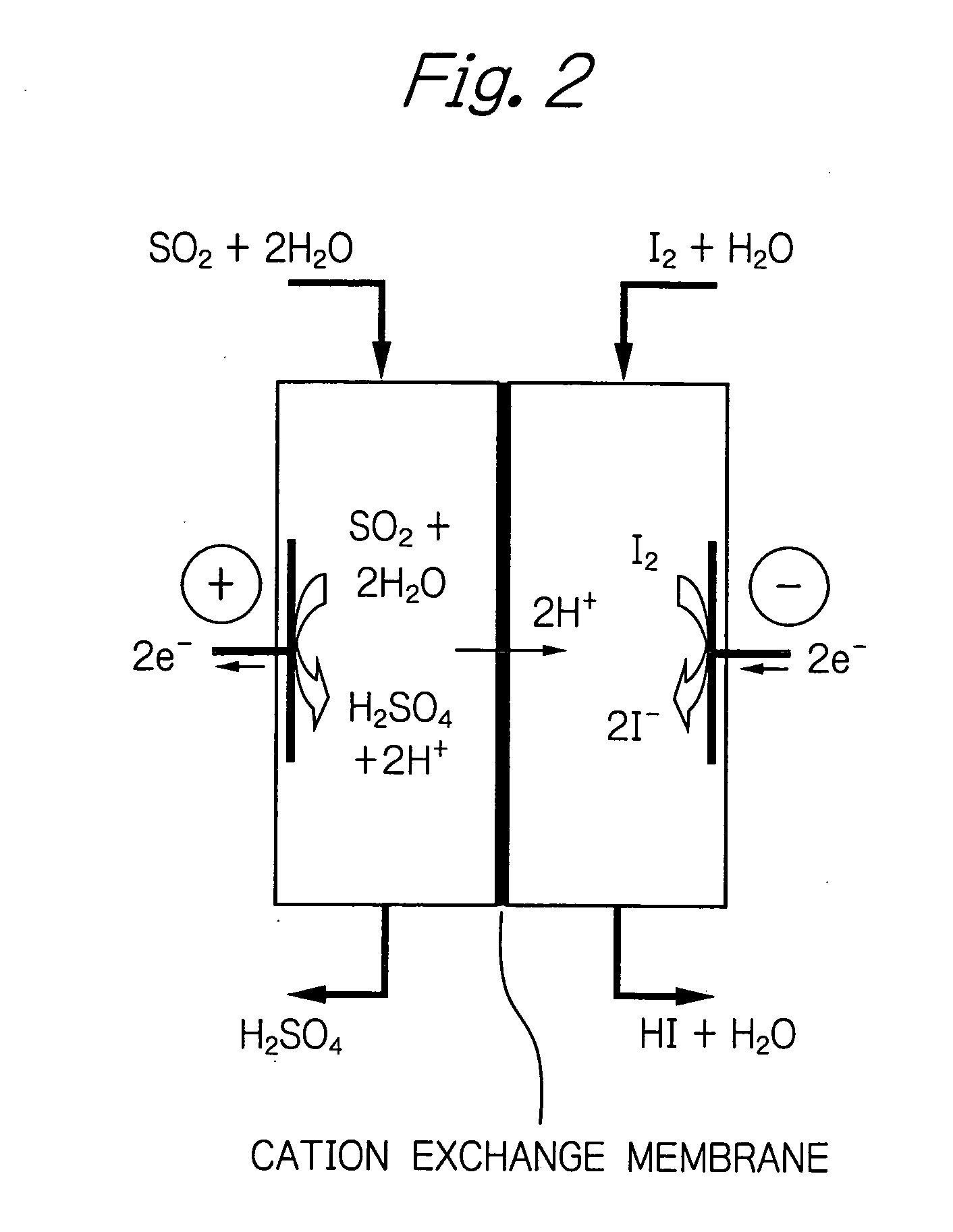Process for efficient hydrogen production by thermochemical water splitting using iodine and sulfur dioxide
- Summary
- Abstract
- Description
- Claims
- Application Information
AI Technical Summary
Benefits of technology
Problems solved by technology
Method used
Image
Examples
example
[0035] The method of the invention was implemented using Nafion of Du Pont as a cation exchange membrane. A carbon electrode was used as both the positive and negative electrodes. Kalrez (Du Pont) was used as a sealant. Two flasks each having a capacity of 200 ml were provided and one of them was supplied with an aqueous solution containing sulfuric acid at a specified concentration under bubbling of sulfur dioxide gas. The other flask was supplied with an aqueous solution containing hydrogen iodide and iodine at specified concentrations. Using rotary pumps, the two aqueous solutions were flowed to the positive and negative electrodes. A constant current was flowed for a specified period to get the reaction to proceed. The reaction temperature was controlled by heating the system with an external heater and measuring the temperature of the reaction solution at the exit. The concentrations of the respective solutions were measured by titration.
[0036] First, a review was made of the ...
PUM
 Login to View More
Login to View More Abstract
Description
Claims
Application Information
 Login to View More
Login to View More - R&D
- Intellectual Property
- Life Sciences
- Materials
- Tech Scout
- Unparalleled Data Quality
- Higher Quality Content
- 60% Fewer Hallucinations
Browse by: Latest US Patents, China's latest patents, Technical Efficacy Thesaurus, Application Domain, Technology Topic, Popular Technical Reports.
© 2025 PatSnap. All rights reserved.Legal|Privacy policy|Modern Slavery Act Transparency Statement|Sitemap|About US| Contact US: help@patsnap.com



